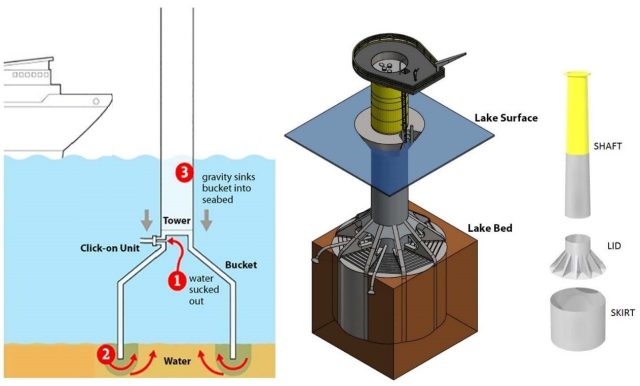An energy development group has been working for years to put together Ohio's first offshore wind project. That might sound odd for a state so far from the sea, but the benefits of offshore wind (strong, consistent gusts and relative proximity to major population centers) translate to wind turbines that are placed in freshwater, too. Consequently, an area eight miles off Ohio's Lake Erie coastline is slated to see six new 3.45 megawatt (MW) turbines as part of a 20.7MW pilot installation.
On Thursday, the Department of Energy (DOE) issued an Environmental Assessment stating that proceeding with the plan would not cause any "impact to the human environment." In an additional finding published by the DOE this week, the department added that it did not believe that the offshore wind project would cause significant damage to migratory birds, either. Finally, the DOE proposed an unspecified amount of funding for the project, which will be the first freshwater offshore wind project in the US and one of the first offshore wind projects overall.
The DOE's conclusions are good news for the Lake Erie Energy Development Corporation (LEEDCo) and Norwegian investor Fred Olsen Renewables (FOR), which will help develop the "Icebreaker" project, as the turbine installation has been called. Interestingly, the turbines will be secured to the lake using a "Mono Bucket" foundation, with a suction-based design that's similar to what's been used on offshore oil-drilling platforms in the North Sea. The design, LEEDCo says, uses "the best and lowest-cost technology for sites 25 meters and less."

The Icebreaker project is small, but it already has approval from Cleveland Public Power (CPP) to develop a substation on an existing CPP site. It also has approval from PJM, the major grid operator in the region, to sell its electricity on the market. LEEDCo's website says that "the winds of Lake Erie alone could meet over 10 percent of our electricity needs by 2030."
Opposition to the project has been diverse, however. Some have pointed out concerns about freshwater bird and bats getting hit by the wind turbines. The DOE's decisions this week dismissed those concerns, however. "There is no known credible scientific controversy over the impacts of the Proposed Project," the DOE wrote (PDF). "Accordingly, effects on the quality of the human environment are not likely to be highly controversial."
A second volley of opposition to the project has come from the Murray Energy Corporation, the largest privately owned coal company in the US, whose CEO has made significant campaign contributions to the Trump administration. In August, Cleveland.com reported that Murray Energy was bankrolling lawyers for two Ohio residents who testified against the project as interveners. One of the residents complained that the view from his condo would be marred. As a direct competitor of the wind installation, Murray Energy would not have been able to intervene itself.
The DOE's Environmental Assessment is a significant step in the IceBreaker project's ability to move forward, especially with the recommendation for federal funding. The amount of funding that the DOE will propose is still unclear. In a press release, Dr. Lorry Wagner, president of LEEDCo, said, "This is the most significant single approval Icebreaker Wind has received to date."
[contf] [contfnew] 
Ars Technica
[contfnewc] [contfnewc]







